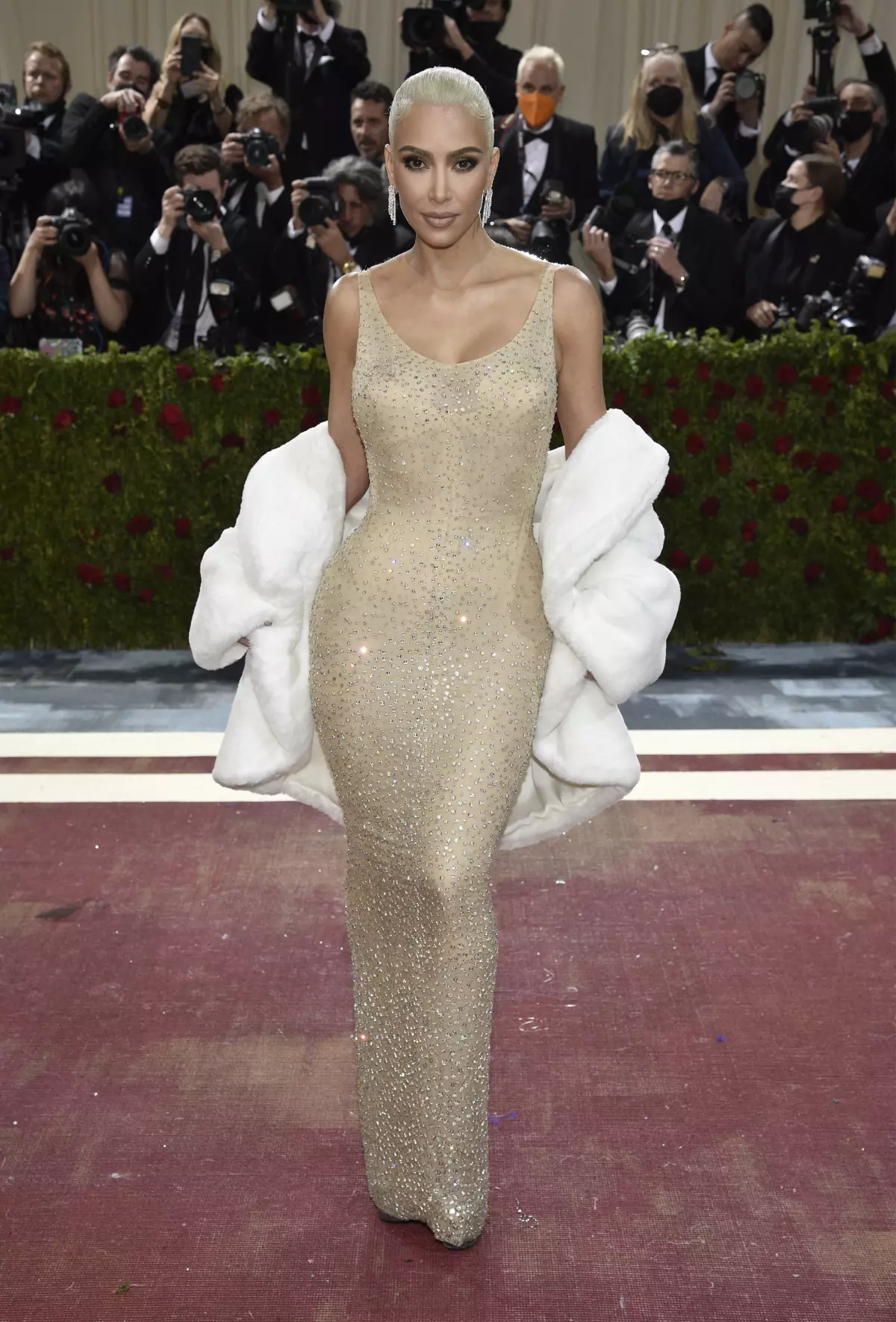The Controversy Surrounding Kim Kardashian’s Met Gala Outfit: Did She Damage Marilyn Monroe’s Historic Dress?
In May 2022, Kim Kardashian made headlines by wearing Marilyn Monroe’s iconic 1962 gown to the Met Gala. This dress, originally worn by Monroe to sing “Happy Birthday” to President John F. Kennedy, is considered one of the most valuable pieces of fashion history. However, shortly after the event, reports emerged suggesting that the gown had been damaged. This controversy ignited a larger debate about the ethics of wearing fragile historical garments, the responsibilities of museums and private collectors, and the long-term impact of using delicate fashion artifacts in modern-day events.
The Condition of the Dress Post-Met Gala
By June 2022, experts and fashion enthusiasts noticed visible signs of wear and damage to the gown. Key observations included:
- Missing sequins and crystals
- Fabric puckering and distortion
- Tears and stress on the back closure
- Pulled seams and frayed stitching
Given that the gown was made from a delicate soufflé silk fabric adorned with hand-sewn embellishments, experts had already warned about its fragility. Textile conservators argued that even short-term wear could cause irreversible damage. Despite these concerns, the dress was temporarily loaned for the high-profile event, sparking outrage among preservationists.
Bob Mackie’s Criticism: A Designer’s Disapproval
Bob Mackie, the designer who originally sketched the dress for Monroe under the guidance of costume designer Jean Louis, strongly criticized the decision to let Kardashian wear it. He stated, “Nobody else should be seen in that dress.”
Mackie emphasized that the gown was custom-designed for Monroe and not meant to be worn again. His remarks aligned with the views of museum professionals and historians, who argued that allowing a fragile piece of history to be worn at a red-carpet event was irresponsible and risked damaging its integrity.
Ripley’s Believe It or Not! Defends the Decision
The dress is owned by Ripley’s Believe It or Not!, which purchased it for $4.8 million in 2016. The organization denied allegations that Kardashian caused any harm to the gown, stating, “Great care was taken to preserve this piece of history.”
Ripley’s explained that Kardashian wore the original dress only for a short period on the red carpet before changing into a replica for the rest of the evening. They also claimed that professional conservators inspected the dress before and after the event and found no significant changes.
However, some textile experts disagreed, arguing that even minimal handling could accelerate the fabric’s deterioration. Critics suggested that Ripley’s decision was driven by publicity rather than a commitment to preserving the garment’s historical significance.
Kim Kardashian’s Response
Kardashian addressed the controversy by denying that she had caused any damage. She emphasized that she adhered to all preservation guidelines set by Ripley’s and even lost 16 pounds to fit into the dress without altering its structure.
Despite her claims, comparison images circulated online, appearing to show noticeable wear and missing embellishments post-event. Some fashion historians argued that stress from movement, body heat, and natural oils could have contributed to fabric degradation, while others defended Kardashian, suggesting that the dress was already deteriorating due to age.
The Larger Debate: Should Historical Garments Be Worn?
This incident has fueled a broader discussion about whether historical garments should ever be worn again. Many experts advocate for using replicas instead of originals to prevent irreversible damage. The debate also raises critical questions:
- Should museum-quality garments be worn, or should they remain preserved as artifacts?
- What is the responsibility of celebrities in handling historical pieces?
- Should stricter guidelines be implemented for lending and displaying fragile garments?
Many museum professionals argue that once a garment enters a historical collection, it should no longer be worn, as even the most careful handling can cause harm. Others believe that occasional wear can help bring attention to fashion history, but only under strict conservation measures.
Conclusion
The controversy surrounding Kim Kardashian’s Met Gala outfit has reignited discussions about fashion preservation and responsible handling of historical artifacts. While Ripley’s Believe It or Not! and Kardashian maintain that no harm was done, the visual evidence has sparked concerns among conservationists. Moving forward, experts recommend enforcing stricter regulations on wearing museum-quality garments and raising awareness about the importance of preserving fashion history.
FAQs
1. Why is Marilyn Monroe’s dress historically significant?
The dress was worn by Monroe in 1962 when she sang “Happy Birthday” to President John F. Kennedy, making it one of the most iconic fashion moments in history.
2. What damages were reported after Kim Kardashian wore the dress?
Observers noted missing sequins, fabric puckering, pulled seams, and stress damage to the back closure.
3. Did Kim Kardashian admit to damaging the dress?
No, Kardashian denied causing any harm and stated she followed all preservation guidelines provided by Ripley’s Believe It or Not!.
4. Why did Bob Mackie criticize the decision?
As the original designer of the sketch, he believed the dress was too fragile and historically significant to be worn by anyone other than Marilyn Monroe.
5. How can historical fashion pieces be better preserved?
Experts recommend displaying original garments in controlled museum environments and using replicas for public appearances to prevent deterioration.
Final Thoughts: The Importance of Fashion Conservation
This debate underscores the delicate balance between celebrating fashion history and ensuring its preservation. While high-profile events can bring attention to iconic pieces, they also pose risks to the garments themselves. Moving forward, it is essential for museums, collectors, and celebrities to prioritize conservation, ensuring that future generations can appreciate these historical masterpieces without compromising their integrity.








